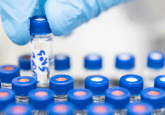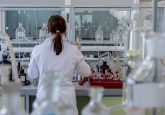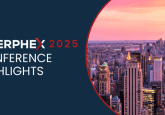From lab to launch: strategies for scalable and compliant drug development with Lenora Dieyi

In this interview, Lenora Dieyi (GSK; London, UK) discusses her upcoming panel appearances at INTERPHEX 2025 (21-23 April; NY, USA), where she’ll highlight strategies to build agile, resilient and globally accessible drug development systems. She shares her insights on process design, scale-up and innovation, and discusses the critical knowledge transfer challenges between lab and GMP environments. Lenora also explains the importance of real-time analytics in autologous cell therapies, and the role of AI-enabled systems in optimizing pharmaceutical manufacturing.
Meet the interviewee:
 Lenora Dieyi
Lenora Dieyi
Modeling & Simulation Engineer – Investigator, Sterile Drug Product Development
GSK
Lenora Dieyi is an R&D Investigator (Process and Simulation Engineering) at GSK with extensive experience in pharmaceutical processing spanning large and small molecules and cell and gene therapy products. Over her tenure at GSK, Lenora has been instrumental in advancing sterile drug product development, specifically for long-acting drug nanoparticles. She has led critical projects involving the scale-up and technology transfer of lab-based processes, digitization of plant operations, and industrialization of manufacturing platforms. Her expertise in GMP environments enables her to bring unique insight to process design, optimization and modeling as an R&D engineer. Having lived and worked in several countries, Lenora brings a global perspective to her work, with a deep commitment to leveraging science and technology for societal benefit.
You’re participating in multiple panel discussions at INTERPHEX 2025. What key topics are you most excited to explore, and what insights do you hope to share with attendees?
I’m incredibly honored to be participating in multiple panel discussions at INTERPHEX 2025, and what excites me most is the chance to engage with some of the most pressing and dynamic challenges facing life science manufacturing today. While the topics vary, from automation and advanced therapies to digitization and global access, a common thread runs through them all: the need for systems that are innovative, adaptable, compliant, and built with long-term resilience in mind.
Whether it’s rethinking how we scale innovations from lab to commercial production, embedding AI to accelerate decision-making and product release, or advancing modular, compliant technologies to expand global access, these panels underscore how interconnected our challenges and solutions are. I’m particularly looking forward to sharing practical insights from R&D and Good Manufacturing Practise (GMP) environments and bridging the gaps between engineering, science and strategic implementation to support more sustainable, future-ready manufacturing systems.
Through these discussions, my goal is to help foster that integrated mindset grounded in real-world experience but firmly focused on where we need to go next. I hope to contribute ideas that reflect the complexity of our current landscape and point the way toward more agile, equitable and impact-driven approaches to pharmaceutical development.
With your extensive experience scaling up drug manufacturing processes, what are the most significant challenges in transitioning from lab-scale to commercial-scale production, particularly for cell and gene therapies?
One of the most significant challenges in transitioning from lab-scale to commercial-scale production is not just the science or the scale itself, but how we manage and translate knowledge between R&D and manufacturing. Often, it’s not what teams know that creates friction; it’s what they don’t know they don’t know. Lab teams may develop an elegant, high-performing process. Still, when that process moves into a GMP environment, we quickly encounter questions about scalability, validation, documentation and compliance that weren’t fully addressed during development.
For autologous cell therapies in particular, scale isn’t always the main hurdle, since these therapies are inherently small-batch and patient-specific. Instead, the regulatory burden, especially around product release testing, can be incredibly complex. Because these therapies often have short shelf lives and narrow dosing windows, much of the necessary release testing must be completed in a compressed timeframe, making rapid and real-time release essential for product viability and patient care.
How can companies mitigate these challenges in early development?
To mitigate these challenges, we need to focus on three things. First, we must become savvy about knowledge management. The volume of data we generate in pharma is growing exponentially, but the human brain hasn’t evolved to keep up. We need AI-enabled systems to help us organize, surface and connect knowledge across the product lifecycle, from early development to commercial tech transfer.
Second, we need agile MSAT teams that serve as an actual bridge between R&D and manufacturing. MSAT should be cross-functional by design, capable of interpreting early-stage process design through a commercial lens, and able to spot gaps that might otherwise surface too late. Third, we must accelerate the implementation of real-time analytics and rapid-release testing. Speed is critical in cell and gene therapy and traditional timelines don’t align with patient needs or clinical realities. The more we can embed quality and release readiness into the process, the closer we get to an agile and compliant model.
As an R&D engineer with expertise in GMP environments, what are your recommended best practices for ensuring compliance while maximizing innovation during process design and optimization?
As someone who’s worked at the intersection of R&D and GMP-regulated manufacturing, I’ve found that the key to balancing innovation and compliance is bringing those two worlds together early in the process. Innovations that can’t be validated or scaled under GMP conditions won’t make it past the lab, so we need to think about compliance not as a constraint, but as a design input from day one.
One of the biggest challenges I’ve seen is the lack of effective knowledge transfer between teams. And here’s something that may be an unpopular opinion: translators – people who deeply understand both early-stage process development and GMP manufacturing – are rare in pharma, and that significantly hinders tech transfer. We need to do more to bridge that gap. Let’s get our manufacturing teams out of the suite and our scientists out of the lab and give them opportunities to talk and truly understand the environment in which each other works. Firsthand exposure is key to designing innovative processes that can be scaled up compliantly.
It also helps to build structured, digital knowledge-sharing systems that track decisions, context and learnings as things evolve. The volume of data in pharma is enormous, and no single person can absorb it all, so we need smart tools, like AI-assisted knowledge management, to help connect the dots and surface what matters most.
Finally, we need to prioritize equitable innovation – solutions that are scalable, compliant and accessible across diverse global settings, including in low- and middle-income regions where space, cost and infrastructure can be limiting. To deliver impactful therapies globally, our processes must be as adaptable and resilient as the science behind them.
You may also be interested in:
- 60-seconds with Francis Dessy & Ivo Sonderegger: Harmonization of vaccine ligand binding assays validation
- The use of GenAI in bioanalysis: an interview with Priyata Kalra
- In the Zone: automating analytical methods for gene therapy
The opinions expressed in this interview are those of the interviewee and do not necessarily reflect the views of Bioanalysis Zone or Taylor & Francis Group.






